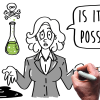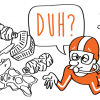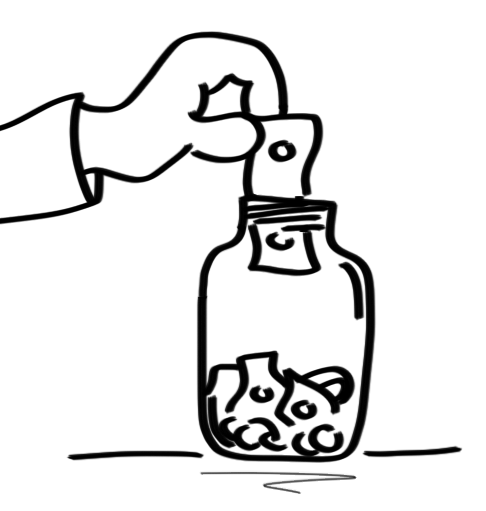How can we be sure that our circular economy solutions are fully sustainable and supporting nature?
For this video created with WWF Sweden, the intention was to use a rigorous science-based framework (Framework for Strategic Sustainable Development) to see if there was a risk that the circular economy solutions used by businesses create unexpected problems. We found that it is important to make sure that the resources we borrow from nature (and use inside technical cycles within society) return to nature eventually to regenerate it.
For more details, watch my video on “Circular economy: definition & examples” and all my videos on sustainability here.
Transcript
Circular economy has captured the imagination of citizens and businesses eager to contribute to a more sustainable future, and rightly so. But how can we be sure that our circular economy solutions are fully sustainable and supporting nature?
The circular economy model can be a very helpful tool to think about resource consumption and product making in our human society. It can help us move away from a linear take-make-waste model to a circular one in which everything is healthy food for something else. But we need to keep in mind that our society is part of the larger natural system which has a unique set of rules within which we must work. Left to their own devices, nature’s cycles are well balanced. Photosynthesis powers a relatively rapid cycle between plants and animals, which produces structure in matter within nature. This is in contrast with slower geological cycles that move matter between the earth’s crust and nature.
The law of conservation of matter also tells us that all the matter on our planet today is the same is the same matter that has been here for the past 4 billion  years. “Nothing is lost, nothing is created, everything is transformed.” In other words, our resources are finite and when we, as a human society, interfere with natural cycles, there is a risk of becoming unsustainable and damaging the cycles we depend upon. How do we do that? There are three ecological root causes of unsustainability: We systematically extract more resources from the earth’s crust than nature can cope with; We systematically produce more substances in our society than nature can break down; We physically hinder nature from running its cycles. Through our agriculture and forestry practices, we borrow areas in nature and use its resources in the production landscapes we create.
years. “Nothing is lost, nothing is created, everything is transformed.” In other words, our resources are finite and when we, as a human society, interfere with natural cycles, there is a risk of becoming unsustainable and damaging the cycles we depend upon. How do we do that? There are three ecological root causes of unsustainability: We systematically extract more resources from the earth’s crust than nature can cope with; We systematically produce more substances in our society than nature can break down; We physically hinder nature from running its cycles. Through our agriculture and forestry practices, we borrow areas in nature and use its resources in the production landscapes we create.
The circular economy model offers a distinction between the cycle for biological materials (renewable resources such as wood, fibres, food, etc.) and the one for technical materials (metals, minerals, fossil resources, etc). But how many resources can we extract from nature before this extraction causes a problem? And how long can we keep them in a closed loop cycle within society before these same resources need to be returned to nature so that they can keep cycling as they always have?
extract from nature before this extraction causes a problem? And how long can we keep them in a closed loop cycle within society before these same resources need to be returned to nature so that they can keep cycling as they always have?
Let’s look at agricultural practices for instance! Farmers produce wheat for food. Straw is a by-product of wheat production and is sometimes considered “waste” economically. It can be tempting to turn this “waste” into a product but keep this in mind: straw is composed of carbon, hydrogen, oxygen, nitrogen, phosphorus and many other elements. Nitrogen, phosphorus and carbon are vital elements for plant growth, playing key roles in energy transfer, photosynthesis, nutrient movement within the plant and overall health. If we bring in and keep large amounts of straw within technical cycles in society for decades, soil fertility where it was harvested will be impacted and the foundation for regenerative agriculture will be tampered with. To avoid a systematic accumulation within society, some resources are best kept within agriculture’s own cycles (as compost for instance) to keep them working well. The same reasoning applies to other renewable waste streams such as the use of pineapple leaves to make sneakers. It sounds like a great idea but we need to make sure these resources we borrow from nature are returned on timelines that mimic nature’s, helping to preserve soil fertility and regeneration. In the language of circular economy, we need to keep biological cycles separate from technical cycles to ensure regenerative and
sustainable agriculture.
Now, let’s look at forestry practices! Some businesses are tempted to harvest stumps, roots, branches and twigs as well as trunks for example. Chipped or processed into wood pellets for use in biomass power plants and for the creation of new materials, this can also look like turning a “waste” into a product. Everything we take away from production landscapes will hinder regenerative forestry. These “residues” play a critical role in the forest and removing them takes away nutrients, can disturb soil structure and ecosystems functions as well as hinder the natural regeneration and health of the forest soil. Keeping dead wood in the forest is also important for many species to live off.
 It is important to keep a systems perspective when using the circular economy model to make sure our solutions will not create new unexpected problems and that they will make us truly sustainable and future proof as a business.
It is important to keep a systems perspective when using the circular economy model to make sure our solutions will not create new unexpected problems and that they will make us truly sustainable and future proof as a business.
Contact us to discuss the challenges that are relevant to your business and make sure that we come up with solutions that will be sustainable in the long run.







